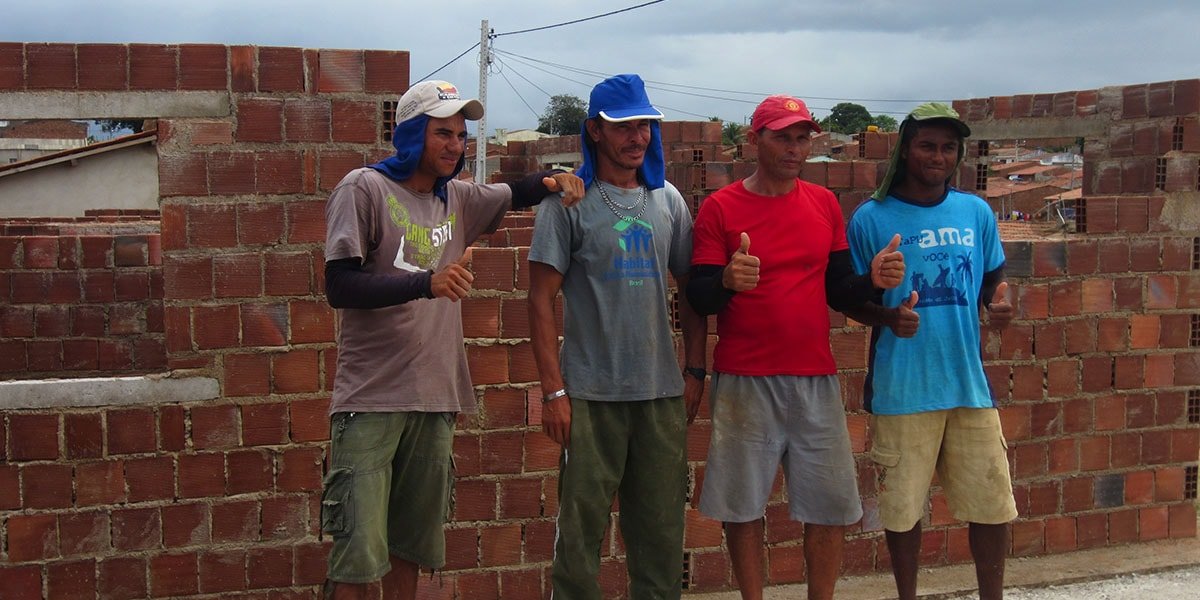

The housing problem in Brazil
Brazil is the 5th most populous country in the world and has the 9th largest economy, yet it is also among the most unequal countries in the world with most of the wealth concentrated in the South (UN Statistics Division, 2006). Despite its rapidly growing economy, around 11.8 million people live on less than $1.25 a day and over 60% of these live in the semi-arid North East Region (World Bank, 2009).
More than 50 million Brazilians live in inadequate housing (World Urban Forum, 2010). The North East State of Pernambuco has the highest housing deficit in Brazil, with 66% of those in need of housing living below the poverty line with no access to normal banking facilities.
Varjada is a rural agricultural community in Pernambuco. Most shelters in Varjada are made from a combination of earth and clay. These precarious structures have no foundations, no sanitation, sit on bare earth floors, and do a poor job of protecting families from bad weather and theft.
The walls also let in insects through the cracks and holes, increasing the risk of Chagas disease, transmitted by the triatomine bug. Chagas is a lethal disease, usually picked up by children, and can remain undetected for years before developing into life-threatening heart and/or digestive disorders.
Water is also a huge problem in this semi-arid region as droughts can last up to nine months of the year and the only water available comes from polluted lagoons. With no potable water available in the community, children and mothers walk up to four hours a day to find suitable drinking water. Such laborious activity reduces time spent on work and school. Over 50% of the children in Varjada do not attend school.
Habitat for Humanity’s work in Brazil
This project initially pledged just 24 houses and 24 reservoirs. The success of the initial stage exceeded expectation and prompted the proposal of a multi-phase approach, ultimately leading to the construction of 30 brick houses and 28 water reservoirs.
Each house measures 46 square metres and consists of two bedrooms, a kitchen, living room, bathroom, and terrace. Water reservoirs were dug 1.5 metres deep next to the house. Each reservoir has the capacity to store 16,000 litres of water, sufficient to capture the 200mm of rainwater that falls during three months of the year.
The project relied on assisted self-help construction, involving the participation of the families in the building process. Feeding into the physical provision, Habitat for Humanity delivers training and education including sanitation and financial literacy encouraging community development beyond the scope of the project. It has already empowered many women who have formed a cooperative for better working conditions.
Contact with local and federal government has resulted in the Health Ministry contributing resources and the local Municipality of Passira supporting the construction and implementation of health centres.
Impact
The scope of this project and the wide reaching involvement of the community hope to encourage long-term responsibility. Safer living conditions especially for children has seen a 100% increase in school attendance and incomes are set to increase with more time and better health. This is crucial to the sustainability of the project.
The immediate threats from parasites have been reduced and each water reservoir is providing security during the dry season. Additionally, families informed on a range of topics including communication, advocacy and the potential of the embroidery market will cultivate a new order of community that has the means to sustain itself and develop.
